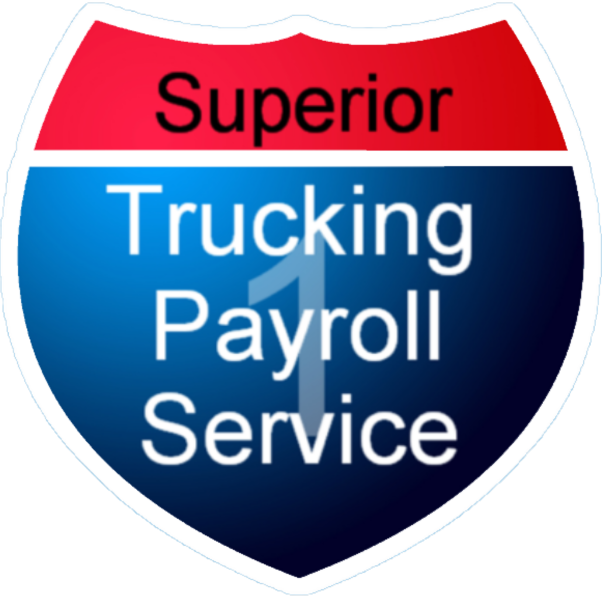Navigating partnership taxes can be a headache. If you’ve ever wondered what Form 1065 is or worried about filing it correctly, you’re not alone. Missing deadlines or making errors could mean hefty IRS penalties—but understanding it doesn’t have to be complicated.
Filing taxes for a partnership is different from filing as an individual or a corporation. Since partnerships don’t pay corporate income taxes, profits and losses must be reported on a special form. However, the process isn’t always straightforward. If you miss a deadline or make a mistake, it could lead to penalties from the IRS.
At Superior Trucking Payroll Service, we understand that tax season can be stressful, especially for trucking companies and partnerships managing complex finances. That’s why we’re here to break things down in a simple, easy-to-understand way.

In this guide, you’ll learn what Form 1065 is, who needs to file it, where to file it, and how to fill it out correctly to avoid costly mistakes.
What Is Form 1065?
Form 1065, officially called the U.S. Return of Partnership Income, is a tax document used by partnerships to report their business income, deductions, and other financial details to the IRS. However, this form is not used to pay taxes. Instead, it serves as an informational return that shows how much money the business made and how those earnings were divided among the partners.
How Are Partnerships Taxed?
Unlike corporations, partnerships are pass-through entities. This means they do not pay income taxes at the business level. Instead, the business’s profits or losses are passed through to the individual partners, who report their share of earnings on their personal tax returns.
Since Form 1065 is just a report and does not involve direct tax payments, partners still need to pay income tax, self-employment tax, and other applicable taxes based on their share of the earnings.
Who Must File IRS Form 1065 (Partnership Tax Returns)?
Not every business needs to file Form 1065, but if your company operates as a partnership, this tax form is a requirement. The IRS has clear rules on who must file, and failing to do so can lead to penalties. Let’s take a closer look at which businesses are required to submit Form 1065.
Domestic Partnerships
The IRS requires all domestic partnerships to file Form 1065. A partnership is defined as any business where two or more people share ownership and split profits and losses. This includes:
- General partnerships
- Limited partnerships (LPs)
- Limited liability partnerships (LLPs)
- Multi-member limited liability companies (LLCs)
If your business falls under one of these categories, filing Form 1065 is mandatory—even if the partnership did not make any money during the tax year.
Exception: If a business is owned by a husband and wife in a community property state, they may be eligible to file as a qualified joint venture instead of a partnership.
Foreign Partnerships
A foreign partnership (one formed outside the U.S.) must file Form 1065 if it earns money in the United States. However, there are exceptions. A foreign partnership does not have to file if:
- It had no effectively connected income (ECI) in the U.S.
- Its total U.S. earnings were less than $20,000
- Less than 1% of its income was allocated to U.S. partners
- It had no U.S. partners
Religious and Nonprofit Partnerships
Some religious organizations operate as partnerships under Section 501(d) of the tax code. These organizations must file Form 1065 if they distribute profits among their members, even if those distributions are not physically paid out.
Once you’ve determined that your partnership needs to file Form 1065, the next step is knowing where and how to submit it. Depending on your business size and situation, you may need to file electronically or mail your return to the IRS.
Where to File Form 1065?
There are two main ways to file Form 1065:
Electronically (Recommended)
E-filing is the easiest and fastest way to submit Form 1065. The IRS requires partnerships with 100 or more partners to file electronically, but smaller partnerships can choose this option as well. E-filing reduces errors, speeds up processing, and helps avoid penalties for mistakes.
By Mail (If Required)
Filing Form 1065 is only part of the process—timing is just as important. To avoid late penalties, you need to know exactly when your partnership tax return is due and whether you qualify for an extension.
Filing Form 1065 is only part of the process—timing is just as important. To avoid late penalties, you need to know exactly when your partnership tax return is due and whether you qualify for an extension.
When Is Form 1065 Due?
The deadline for filing Form 1065 depends on the partnership’s tax year:
- For calendar-year partnerships: The due date is March 15 of the following year.
- For fiscal-year partnerships: The deadline is the 15th day of the third month after the tax year ends.
If March 15 falls on a weekend or holiday, the deadline is moved to the next business day.
Can You Get an Extension?
Yes. If you need extra time to file Form 1065, you can request a six-month extension by filing Form 7004. This moves the deadline to September 15.
However, getting an extension does not delay any taxes owed. Partners must still pay estimated taxes on time to avoid interest and penalties.
Step-by-Step Guide to Filing IRS Form 1065
Step 1: Gather Your Business Records
Before filling out Form 1065, you’ll need:
- Profit and loss statement (income and expenses)
- Balance sheet (assets and liabilities)
- Tax ID (EIN) for the partnership
- Partner details (names, addresses, and ownership percentages)
- Records of deductible expenses
Step 2: Fill Out Form 1065
The form requires details about:
- The partnership’s income, deductions, and net profit or lose
- The names and tax information of all partners
- The accounting method used (cash or accrual)
Step 3: Prepare Schedule K-1 for Each Partner
Each partner must receive a Schedule K-1, which shows their share of the partnership’s income and losses. They use this form to report their earnings on their personal tax return.
Step 4: File the Return
Submit Form 1065 and all required documents by March 15 (or the extended deadline).
Now that you know when to file, the next step is understanding how to complete and submit Form 1065 correctly. Filing may seem complicated, but breaking it down into a step-by-step process can make it much easier to manage.
What Happens If You Don’t File Form 1065?
Failing to file Form 1065 on time can result in serious penalties:
- Late Filing Penalty: $220 per partner per month (up to 12 months)
- Failure to Provide Correct Schedule K-1 Forms: $290 per incorrect K-1
- Underreporting Income: Additional penalties and interest may apply
The IRS may waive penalties if there is a reasonable cause, such as a natural disaster, serious illness, or technical failure.
Bottom Line: Stay on Top of Partnership Taxes
Filing Form 1065 is a crucial responsibility for partnerships, ensuring that income, deductions, and profit distributions are properly reported to the IRS. While it doesn’t involve paying taxes directly, submitting this form accurately and on time helps partners meet their individual tax obligations and avoid penalties.
For many trucking company owners, keeping up with tax filing deadlines and requirements can feel overwhelming. While payroll taxes are a key part of financial compliance, Form 1065 and other tax filings require additional attention. Missing deadlines or filing incorrectly can lead to unnecessary penalties and stress.
If your trucking partnership needs help with payroll and payroll taxes, Superior Trucking Payroll Service has you covered. We specialize in accurate, hassle-free payroll processing for trucking companies, ensuring your drivers and employees are paid correctly and on time.
Many partnerships struggle with tax compliance. If you need professional help, our trusted partner, Taxes4Truckers, specializes in bookkeeping and tax filing for trucking businesses. If you need assistance with Form 1065 or other tax-related services, they can provide the support you need.
At Superior Trucking Payroll Service, our focus is on making payroll processing simple and stress-free for trucking companies. While we handle payroll taxes, we work with Taxes4Truckers to ensure trucking businesses get the expert tax filing and bookkeeping support they need.
Written by Mike Ritzema
Before founding Superior Trucking Payroll Service, Mike was the CFO of a trucking company with 80 trucks and a thriving brokerage. This experience gave him the perspective that a payroll solution has to make the lives of the office people better. All the solutions he has designed are to benefit everyone. Our company mission is to help trucking families and that includes the company owners, the drivers, and the office.

